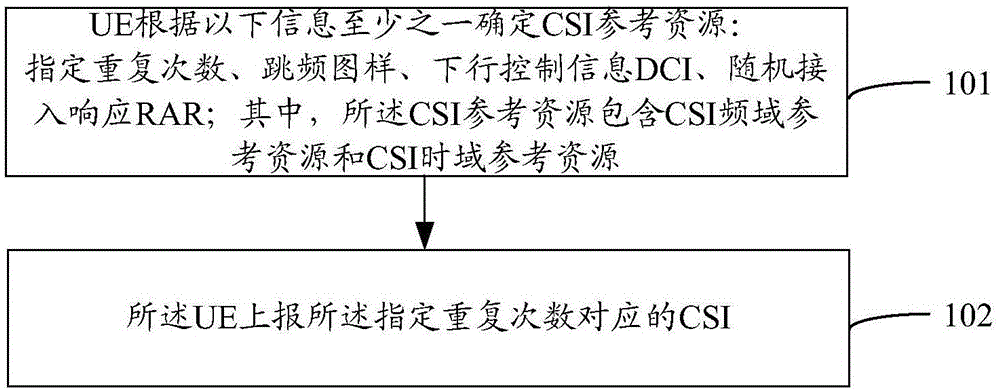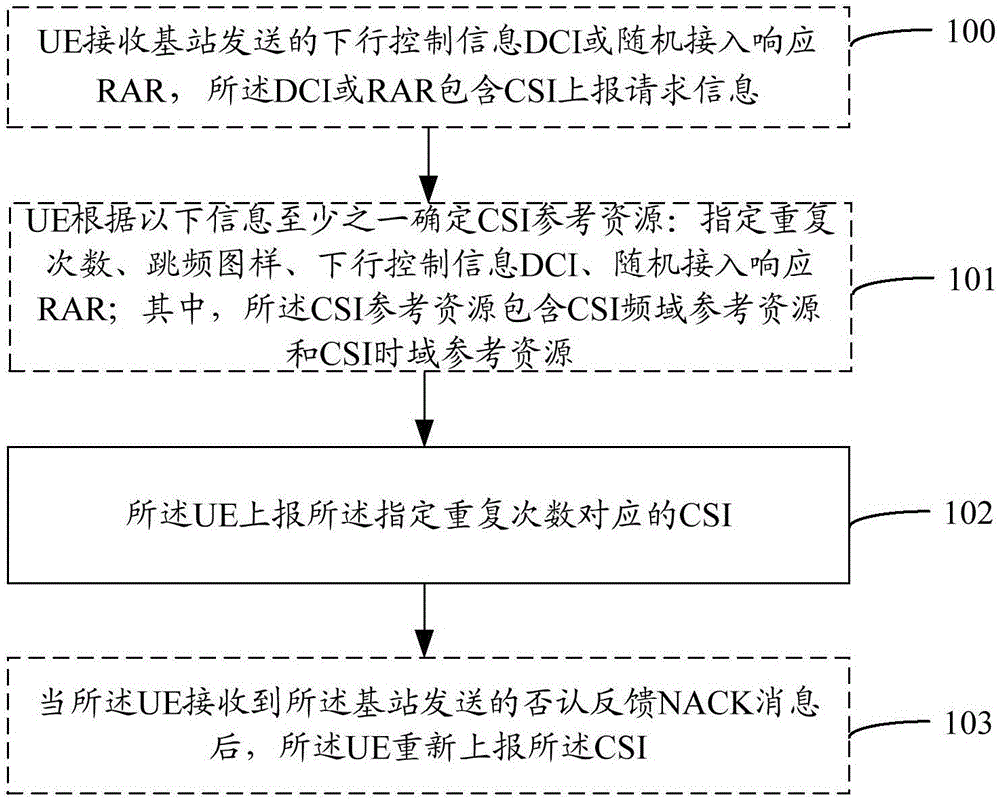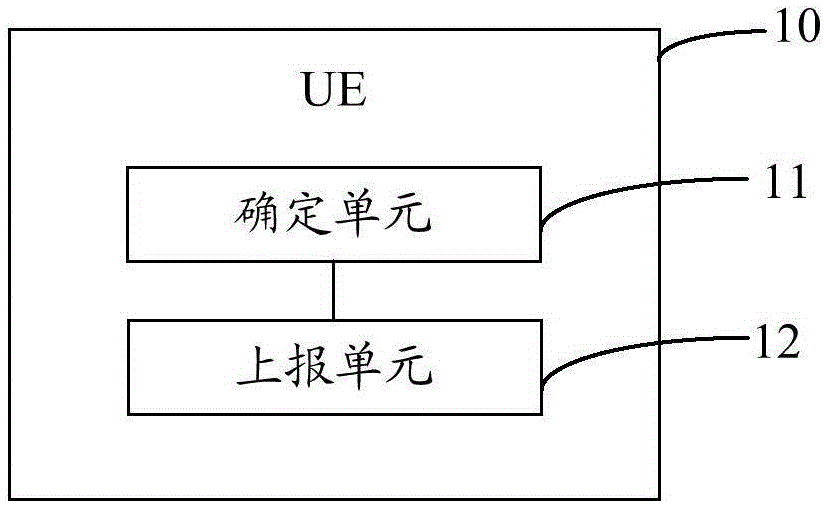Channel state information (CSI) reporting method and device thereof
A technology for channel state information and control information, applied in wireless communication, electrical components, etc., can solve the problems of low base station scheduling efficiency and little reference value
- Summary
- Abstract
- Description
- Claims
- Application Information
AI Technical Summary
Problems solved by technology
Method used
Image
Examples
Embodiment 1
[0188] In this embodiment, a method for determining a CSI reference resource is given.
[0189] In this embodiment, the system bandwidth is divided into several subbands, and the downlink signal can perform frequency hopping and repeated transmission on multiple subbands according to a preset or notified frequency hopping pattern. For example, the PDSCH is sent according to a preset frequency hopping pattern in 10 consecutive subframes. Frequency hopping can be enabled through a system information block (System Information Block, SIB), such as notifying frequency hopping in the SIB, or can be enabled in a UE-specific manner, such as notifying the UE to perform frequency hopping through DCI. Multiple repetition levels can be defined in the system, for example, 4, each UE has its own repetition level, and the method for determining the UE repetition level is not limited in this embodiment. For example, if the repetition level of a certain UE is 1, the repetition level of each c...
Embodiment 2
[0214] In this embodiment, a method for determining a CSI reference resource is given.
[0215] CSI Time Domain Reference Resources:
[0216] The specified number of repetitions corresponding to the CSI may be preset or notified by the base station.
[0217] The CSI time domain reference resource is N determined according to the preset rules rep downlink physical subframes, for example, the CSI time domain reference resources are subframes [n-k-N rep +1,n-k], where n is the reporting subframe, and k is a preset value, for example, k=4 for the FDD system. Subframe [n-k-N rep +1,n-k] means starting from n-k and before N rep physical subframe. For a time division duplexing system (Time Division Duplexing, TDD), different uplink and downlink subframe configurations and different subframes may have different corresponding k values.
[0218] Alternatively, the CSI time-domain reference resources start from n-k and before N rep available downlink subframes, and for the definit...
Embodiment 3
[0222] The aperiodic CSI reporting may be triggered by DCI or RAR, and the DCI or RAR includes CSI reporting request information for triggering the UE to report CSI. Several ways of determining CSI reference resources are given below.
[0223] method one:
[0224] The CSI reference resources may be all subframes in which the UE receives DCI or RAR in the time domain, and may be subbands in which the UE receives downlink signals in all subframes in the frequency domain.
[0225] Alternatively, the CSI reference resource may be all subframes from the start subframe of receiving the DCI or RAR to a preset subframe in the time domain. For example, in an FDD system, the CSI report triggered by the RAR usually occurs in The sixth subframe after the RAR transmission is received sends the PUSCH carrying CSI, then the preset subframe can be defined as n-4, where n is the reporting subframe, then the CSI reference resource is the starting subframe for receiving RAR in the time domain ...
PUM
 Login to View More
Login to View More Abstract
Description
Claims
Application Information
 Login to View More
Login to View More - R&D
- Intellectual Property
- Life Sciences
- Materials
- Tech Scout
- Unparalleled Data Quality
- Higher Quality Content
- 60% Fewer Hallucinations
Browse by: Latest US Patents, China's latest patents, Technical Efficacy Thesaurus, Application Domain, Technology Topic, Popular Technical Reports.
© 2025 PatSnap. All rights reserved.Legal|Privacy policy|Modern Slavery Act Transparency Statement|Sitemap|About US| Contact US: help@patsnap.com



